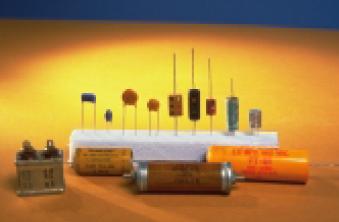
Teaching Physics with the Physics Suite
Edward F. Redish
Problems Sorted by Type | Problems Sorted by Subject | Problems Sorted by Chapter in UP
 |
Teaching Physics with the Physics Suite Edward F. Redish |
Problems Sorted by Type | Problems Sorted by Subject | Problems Sorted by Chapter in UP |
A capacitor is a device for storing electrical energy in the form of a separation of opposite charges. Since these opposite charges attract and would naturally come together, there is energy available when they are separated. The energy can be obtained for conversion to other forms by allowing the separated charges to come together, their mutual attraction creating kinetic energy as they move together. A variety of these devices are shown at the right. (From Understanding Physics, Cummings, Laws, Redish, and Cooney: John Wiley & Sons, Inc., 2003) The magnitude of charge on each plate of the capacitor is related to the voltage difference across the plate and the capacitance, C, of the capacitor: Q = CΔV. |
 |
If we connect connect the negative plate of one capacitor of capacitance C1 to the positive plate of a second capacitor of capacitance C2 we say we are connecting them in series. If we connect the positive plate of one capacitor of capacitance C1 to the positive plate of a second capacitor of capacitance C2 we say we are connecting them in parallel.
A. In the figure at the right are shown two capacitors connected in series. Assume that the capacitors were first connected to each other and then to the battery.
|
 |
B. In the figure at the right are shown two capacitors connected in parallel. Assume that the capacitors were first connected to each other and then to the battery.
|
 |
Page last modified March 15, 2008: E51